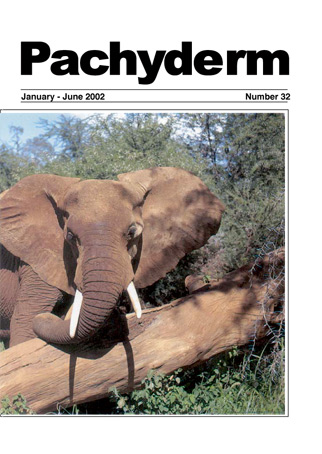MIKE implementation in Botswana
DOI:
https://doi.org/10.69649/pachyderm.v32i1.1089Abstract
This article, based on a paper given at the Fifth AfESG Meeting at Shaba NR in Kenya, is a critical review of the implementation of the Monitoring of the Illegal Killing of Elephants (MIKE) in Botswana. The official MIKE site in Botswana is Chobe NP, but as more activities related to elephants are outside the Park the DWNP has extended MIKE activities to other elephant range areas including Chobe East and West adjacent to the Park, the Okavango area north of the buffalo fence, and the northern Tuli Block. The implemention of MIKE is important as Botswana currently holds Africa's largest elephant population: the present count of 120,000 is growing at 5% per year, most of these animals are in the northern region, but about 800 occur in the Tuli Block in the eastern area along the border with Zimbabwe. Botswana has appointed a MIKE National Coordinator based in Gaborone, and 3 site coordinators based in Kasane, Mathathane and Maun.Training workshops have been conducted for patrol teams. The four forms, namely the carcass report, ground control report, monthly report, and annual report are used with the information being forwarded to the southern African regional coordinator in Namibia. Only the Chobe NP material is being forwarded, information from the other areas will be kept in a database for local/national use. To date 24 carcasses have been reported, 13 resulting from natural causes. 11 elephants were poached from the Maikaelelo FR in April/May 2001. Reviews recommendations the MIKE director made on the implementation of the programme in Botswana, notes 7 problems faced in implementing MIKE, and 5 recommendations to facilitate its implementation.
Downloads
Published
How to Cite
Issue
Section
License
Copyright (c) 2002 Thato Barbara Morule

This work is licensed under a Creative Commons Attribution-NonCommercial 4.0 International License.




